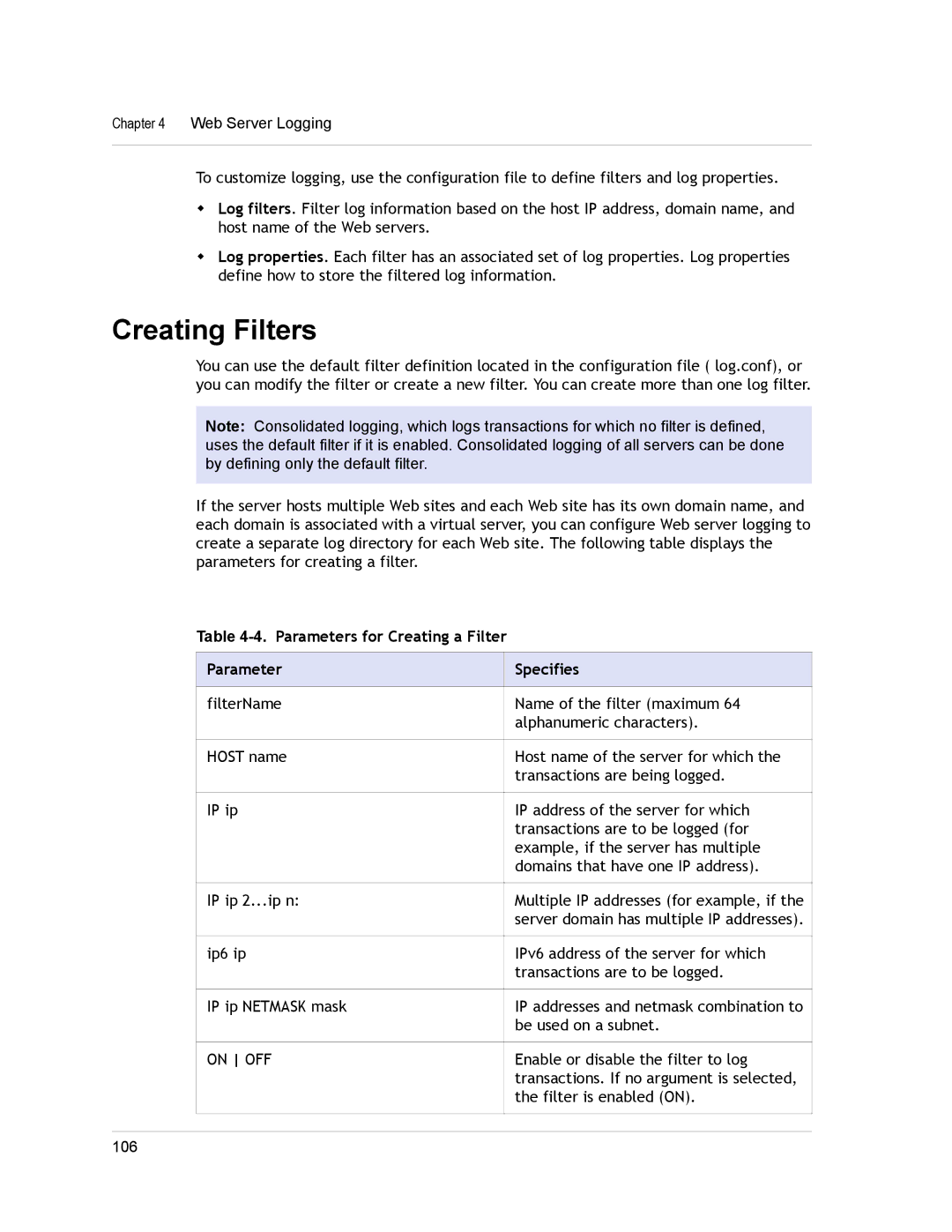
Chapter 4 Web Server Logging
To customize logging, use the configuration file to define filters and log properties.
wLog filters. Filter log information based on the host IP address, domain name, and host name of the Web servers.
wLog properties. Each filter has an associated set of log properties. Log properties define how to store the filtered log information.
Creating Filters
You can use the default filter definition located in the configuration file ( log.conf), or you can modify the filter or create a new filter. You can create more than one log filter.
Note: Consolidated logging, which logs transactions for which no filter is defined, uses the default filter if it is enabled. Consolidated logging of all servers can be done by defining only the default filter.
If the server hosts multiple Web sites and each Web site has its own domain name, and each domain is associated with a virtual server, you can configure Web server logging to create a separate log directory for each Web site. The following table displays the parameters for creating a filter.
Table 4-4. Parameters for Creating a Filter
| Parameter | Specifies |
|
|
|
| filterName | Name of the filter (maximum 64 |
|
| alphanumeric characters). |
|
|
|
| HOST name | Host name of the server for which the |
|
| transactions are being logged. |
|
|
|
| IP ip | IP address of the server for which |
|
| transactions are to be logged (for |
|
| example, if the server has multiple |
|
| domains that have one IP address). |
|
|
|
| IP ip 2...ip n: | Multiple IP addresses (for example, if the |
|
| server domain has multiple IP addresses). |
|
|
|
| ip6 ip | IPv6 address of the server for which |
|
| transactions are to be logged. |
|
|
|
| IP ip NETMASK mask | IP addresses and netmask combination to |
|
| be used on a subnet. |
|
|
|
| ON OFF | Enable or disable the filter to log |
|
| transactions. If no argument is selected, |
|
| the filter is enabled (ON). |
|
|
|
|
|
|
106
